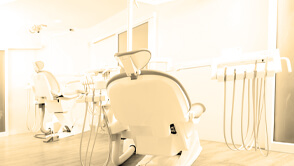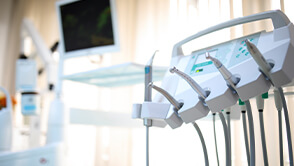
How to Assess and Optimize the Financial Health of Your Dental Practice
- Published
- Mar 19, 2021
- By
- Erick Cutler
- Share
If your dental practice is like most, every day is a nonstop blur of activity. Patients come in, and patients go out; physicians, hygienists, and staff are engrossed in the all-encompassing tasks of their jobs; claims and billings are processed; and the cycle repeats indefinitely. As a result, it seems like there’s just never enough time to get everything done, let alone assess the financial health of the practice and work toward optimal profitability.
For dental practices facing this dilemma, it’s time to step back and take a critical look at each element of your practice:
- What are you and your colleagues doing every minute of every day?
- How are you doing it?
- Why are you doing it the way you’re doing it?
- Is it worth doing at all?
- Should you be doing something else instead?
- If not, could you be doing it differently, better or more efficiently?
- How are you gauging productivity? Profitability?
- For that matter, do you measure job satisfaction among staff members? If so, where does that rank?
- Finally, how satisfied are you with the efficiency and profitability of your practice? If you have partners, do you know how they feel about this?
Few dental practices operate at peak efficiency. It’s the goal, certainly; but the daily demands of this profession often lead to missed opportunities. Whether it takes a seismic shift in your business approach or minor adjustments in select areas, it’s likely there’s a better way forward in at least one area of your practice, and probably many. Traveling that path starts by asking these and other questions, then using the information you’ve gleaned to optimize your processes and empower your people to work smarter and more efficiently.
Not sure where to start? Consider the following areas up front:
1. Be proactive in reducing no-shows.
Few things block the path to profitability for a dental practice more than no-shows. Working in collaboration with an experienced accounting and/or financial partner with deep experience in the dental/healthcare realm can lead to practice efficiencies that minimize billable time lost to no-show patients. Some tips:
- Encourage the practice of scheduling appointments within a week if possible; this helps keep appointments top-of-mind for patients and can reduce the chances and frequency of no-shows.
- Try matching appointment capacity to patient demand; this can help to ease the backlog.
2. Train staff to overcome pending claims challenges.
Pending claims – i.e., those stuck in accounts receivable – are another source of frustration and lost revenue for practices everywhere. Many practices under-collect – or collect nothing at all – due to issues that often can be overcome. This problem has many causes – for example when the practice staff charged with watching pending and denied claims get backed up, simple human nature may cause them to write off many solvable issues.
The insurance claim payment process can be time-consuming and require excessive training for staff. At the same time, accounts receivable often represents the largest area of missed revenue opportunity for dental practices. What to do? Training appropriate staff on up-to-date best practices and techniques – and integrating smart technology – can be a big step toward maximizing collections and minimizing write-offs.
3. Streamline the appointment process – before and after patients arrive.
The key here is maximizing time spent during each patient appointment. In this regard, establishing patient eligibility is key. Some tips:
- Let patients know in advance of appointments the specific amounts they owe, as well as options for payment.
- If some patients are ineligible, contact them before their appointment and encourage them to ask their insurers about their eligibility status.
- Want to maximize point of service collections while minimizing denials and registration errors? Take steps to seamlessly integrate communications and interchange between your front desk and the billing office.
- Collect deductibles and/or copays at the time of the appointment; doing so saves the hassles associated with snail mail billing.
- Ideally, cross-train staff at strategic levels of the practice to perform critical tasks during busy periods. Beyond just ensuring the completion of every task, cross-training helps staff visualize office functionality in a broader light, beyond their own It also facilitates cooperation and teamwork.
- Maintain a database of large area employers and insurance carriers; you’ll avoid having to manually re-enter identical information for different patients, which will save time throughout the day.
Patients aren’t the only ones who merit examination; your practice should be examined inside and out with an eye toward identifying areas for improvement. Again, working with an experienced outside partner can streamline this process and potentially move you in a better direction more quickly.
At the end of the day, meeting your revenue potential hinges on everyone’s ability to optimize daily performance. Pursue these steps now, rely on your experienced tax and financial advisors for assistance, and you’ll be on your way to a more efficient and profitable dental practice.
What's on Your Mind?
Start a conversation with Erick
Receive the latest business insights, analysis, and perspectives from EisnerAmper professionals.







